
Anaxagoras is a young lunar impact crater that is located near the north pole of the Moon. It lies across the larger and more heavily worn crater Goldschmidt. To the south-southeast is Epigenes, and due south is the worn remains of Birmingham.

Naumann is a lunar impact crater located on the Oceanus Procellarum in the northwest sector of the Moon. It is a bowl-shaped, symmetrical crater with a relatively high-albedo rim. There are no notable impact craters overlaying the rim edge or the interior. The nearest named craters are Lichtenberg to the southwest and Nielsen to the southeast. Otherwise it is located in a region of lunar mare which is devoid of significant features.

Deslandres is the heavily worn and distorted remains of a lunar impact crater. It is located to the southeast of the Mare Nubium, in the rugged southern highlands of the Moon. In dimension it is the third-largest crater formation on the visible Moon, being beaten only by Clavius and by the 303-kilometer-diameter walled plain Bailly. The northern and eastern parts of the floor display a relatively level surface, but it is pock-marked with numerous craters. There is a small region of mare material, due to basaltic lava, along the eastern interior floor.

Faraday is a lunar impact crater in the southern highlands of the Moon. It was named after British chemist and physicist Michael Faraday. It lies across the southeast rim of the larger crater Stöfler, and the northwest rim of Faraday forms a wide rampart across the otherwise flat floor of Stöfler. To the east of Faraday is Maurolycus.

Proclus is a young lunar impact crater located to the west of the Mare Crisium, on the east shore of the Palus Somni. Its diameter is 27 km. It was named after 5th century Greek mathematician, astronomer and philosopher Proclus.
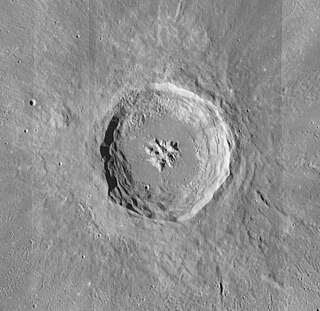
Aristillus is a prominent lunar impact crater that lies in the eastern Mare Imbrium. It was named after Greek astronomer Aristyllus. Directly to the south is the smaller crater Autolycus, while to the southwest is the large Archimedes. To the northeast are the craters Theaetetus and Cassini.

Autolycus is a lunar impact crater that is located in the southeast part of Mare Imbrium. The crater is named after the ancient Greek astronomer Autolycus of Pitane. West of the formation is Archimedes, a formation more than double the size of Autolycus. Just to the north is Aristillus, and the outer ramparts of these two craters overlap in the intermediate stretch of the lunar mare.

Kepler is a lunar impact crater that lies between the Oceanus Procellarum to the west and Mare Insularum in the east. To the southeast is the crater Encke. Kepler is named for the 17th century German astronomer and mathematician Johannes Kepler.

Römer is a lunar impact crater that is located to the north of the Sinus Amoris in the northeast section of the Moon. It was named after Danish astronomer Ole Rømer. It lies in the southwestern part of the mountainous region named the Montes Taurus. It was unofficially named as Atatürk by astronomer Hugh Percy Wilkins in his lunar map, possibly due to the fact that the Montes Taurus are located in Turkey. To the west-northwest is the crater-bay Le Monnier, on the eastern edge of Mare Serenitatis.
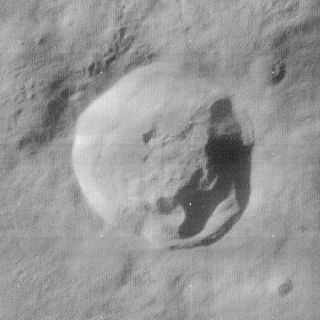
Thales is a small crater located in the northeast part of the Moon, just to the west of the larger crater Strabo. To the southeast is the walled plain De La Rue. Thales has a sharp, circular rim that has received little erosion. The lunar surface around Thales has a ray system that extends for over 600 kilometers, and it is consequently mapped as part of the Copernican System. . An area to the north-northwest of the crater is free of rays, however, indicating that the crater may have been formed by a low-angle impact from that direction. The inner wall has some terraces, particularly along the southern side. The sides have a higher albedo than the typical lunar terrain.
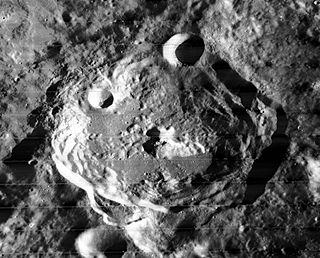
O'Day is a prominent lunar impact crater that is located on the far side of the Moon. It intrudes into the northwestern edge of Mare Ingenii, and the rim is lower on that side. To the northwest is the crater pair of Holetschek and Sierpinski. Southwest of O'Day lies the crater Seidel. It is named in honour of the American physicist Marcus O'Day.
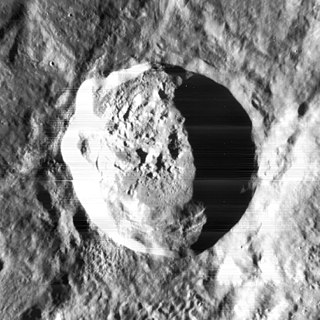
Glushko is a young impact crater on the Moon attached to the western rim of the crater Olbers.

Godin is a lunar impact crater located just to the south of the crater Agrippa, on a rough upland region to the east of Sinus Medii. Its diameter is 34 km. The crater was named after 18th century French astronomer Louis Godin. The ruined crater Tempel lies to the northeast, on the east side of Agrippa. Due south is the flooded remains of Lade.

Campanus is a lunar impact crater that is located on the southwestern edge of Mare Nubium. It was named after Italian astronomer Campanus of Novara. It forms a crater pair with Mercator just to the southeast. Along the southern rampart of Campanus is the small lunar mare named Palus Epidemiarum. To the southwest is the small crater Dunthorne.
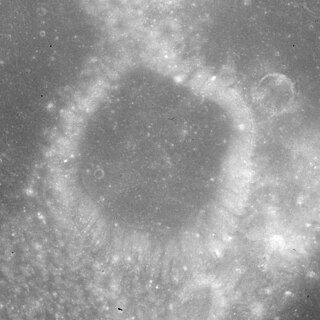
Pomortsev is a small lunar impact crater that is located in the eastern part of the Moon's near side. It was named after Russian rocketry scientist Mikhail Pomortsev. It lies on the eastern edge of Mare Spumans, to the southwest of the crater Dubyago. This formation was previously designated Dubyago P. One crater diameter to the north is the smaller Stewart.

Crozier is a lunar impact crater that is located on the southwest edge of Mare Fecunditatis, a lunar mare in the eastern part of the Moon's near side. It lies to the east-northeast of the prominent crater Colombo, and southeast of the small crater Bellot.

Chrétien is a lunar impact crater that is located in the southern hemisphere on the far side of the Moon from the Earth. It lies due south of the Mare Ingenii, one of the few maria on the Moon's far side. The crater lies in the midpoint between the craters Garavito to the west-southwest and Oresme to the east-northeast, both of these being somewhat smaller than Chrétien.

Crookes is a lunar impact crater that lies on the Moon's far side as seen from the Earth. It lies just to the southwest of the giant crater Korolev. To the southwest of Crookes is McKellar.

Eimmart is a lunar impact crater that is located near the east-northeastern limb of the Moon, to the northeast of the Mare Crisium. The northern and eastern outer rim of this crater borders on the narrow Mare Anguis. To the northwest of Eimmart are the smaller crater Delmotte and the prominent Cleomedes.

Das is a lunar impact crater on the far side of the Moon. It is located to the north-west of the walled plain Chebyshev. To the south-west of Das is the irregular crater Mariotte, and Von der Pahlen lies to the east-northeast. The crater was named after Indian astronomer Anil Kumar Das.





















